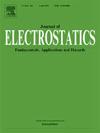等离子体氮化学从NOx去除到固氮:个人观点
IF 2.1
4区 工程技术
Q3 ENGINEERING, ELECTRICAL & ELECTRONIC
引用次数: 0
摘要
等离子体是一种电力驱动的化学过程,可以取代传统的高温高压过程,实现绿色生产,加强可再生能源,追求碳中和。等离子体技术对时间功率变化的适应性,以及其快速启动和关闭的能力,可以为受功率输出波动影响的可再生能源提供一个有前途的解决方案。人们正在研究各种等离子体技术,以寻求各种化学转化的可能性,如CO2分解、CO2甲烷化、干重整和蒸汽重整、NH3合成和NOx生产。在过去的十年中,等离子体NOx生产取得了显著的进步,一些初创公司正在扩大等离子体技术在分散的中小型power-to-X应用中的社会实施。这篇简短的综述集中在等离子体氮化学的基本但经常被忽视的方面。首先讨论与等离子体相关的N2和O2分子的基本原理,然后介绍等离子体氮化学的一个重要应用,即NOx的去除和形成。本文章由计算机程序翻译,如有差异,请以英文原文为准。
Plasma nitrogen chemistry from NOx removal to nitrogen fixation: Personal perspective
Plasma is an electricity-driven chemical process which can replace the conventional high-temperature and high-pressure processes, achieving greener production for strengthening renewable energy in the pursuit of carbon neutrality. The adaptability of plasma technology to temporal power variations, along with its rapid startup and shutdown capabilities, can provide a promising solution for renewable energy, which suffers from fluctuations in power output. Various plasma technologies are being investigated in seeking this possibility for various chemical conversion such as CO2 decomposition, CO2 methanation, dry and steam reforming, NH3 synthesis and NOx production. Remarkable advancements have been made in plasma NOx production during the last decade, and some startup companies are expanding social implementation of plasma technology for decentralized small- or medium scale power-to-X applications. This short review focuses on the basic but often overlooked aspects in plasma nitrogen chemistry. Fundamentals of N2 and O2 molecules related with the plasmas will be first addressed and then removal and formation of NOx will be presented for an important applications of plasma nitrogen chemistry.
求助全文
通过发布文献求助,成功后即可免费获取论文全文。
去求助
来源期刊

Journal of Electrostatics
工程技术-工程:电子与电气
CiteScore
4.00
自引率
11.10%
发文量
81
审稿时长
49 days
期刊介绍:
The Journal of Electrostatics is the leading forum for publishing research findings that advance knowledge in the field of electrostatics. We invite submissions in the following areas:
Electrostatic charge separation processes.
Electrostatic manipulation of particles, droplets, and biological cells.
Electrostatically driven or controlled fluid flow.
Electrostatics in the gas phase.
 求助内容:
求助内容: 应助结果提醒方式:
应助结果提醒方式:


